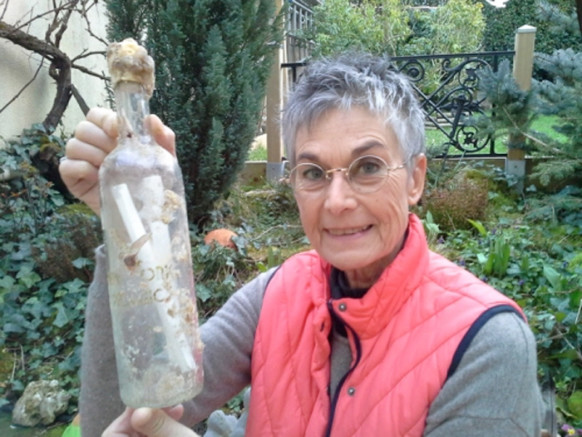George Boorujy
– Artist’s Website –
Oceans are vast. That fact is established to the point of cliché. Even without centuries of desensitizing poetry, prose, and metaphor, the ease with which humans cross over bodies of water—either electronically or in airplanes—leaves most of them without any real idea of what that vastness actually feels like.
I certainly had very little sense of the ocean’s breadth when I stood on a beach in Staten Island in October of 2013 and watched George Boorujy throw a bottle into Raritan Bay. Twenty-eight months later, that bottle—and the two rolled-up pieces of paper inside it—washed up on France’s southwest coastline. Brigitte Barthélémy and her husband Alain were combing a beach for driftwood when they came upon it.
Tossing bottles into the ocean is a side project for Boorujy, a New York artist whose primary job is painting photorealistic wildlife portraits to hang in a Chelsea gallery. (His drawings also feature regularly in The Guardian‘s monthly Birdwatch column.)
His original inspiration came from an email—one of those forwarded chainmails seemingly propagated by the worried aunts of the world—showing dead sea birds, their decomposed bodies filled with bits of plastic. “I was so struck by all this plastic that we throw away and ends up in the water, from anywhere and nowhere and it’s all stuff that we valued at some point,” he says. His version of forwarding the email along was the analog message in a bottle. He called his project New York Pelagic.
Boorujy puts a lot of work into making the experience of finding the messages as memorable as possible. Starting with the bottles, etched with a clean New York Pelagic logo. The two pieces of paper are tightly rolled and tied with bits of string. One of them is a sketch of an oceangoing bird—the type of creature that might mistake colorful bits of plastic for a tasty meal. The other is a typed message explaining how litter caught in ocean currents affects wildlife. All capped off with a nice cork and sealed with bright yellow wax. He’s dropped about 20 such bottles into the ocean. Roughly a third have been found.
Try to imagine this bottle’s journey. It began on a partly cloudy, slightly breezy October day in 2013. The bottle left Boorujy’s hand in a slowly spinning arc and splashed into Raritan Bay. New Jersey’s shoreline filled the southern horizon. Sandy Hook to the east. To the north, Brooklyn. From a bird’s eye view, you can see that the channel escaping New York Harbor is relatively narrow. Smart money would have put this bottle’s end point somewhere between Fort Hancock and Perth Amboy.
brigitte.jpgClick to Open Overlay Gallery
Alain Barthélémy
But the ocean doesn’t follow logic. “Ocean currents follow some general large scale patterns, but within that all these swirls and eddies keep things circulating around, so the paths can be quite convoluted,” says Rick Lumpkin, NOAA oceanographer and co-principal investigator of the Global Drifter Program. In the course of his research, Lumpkin has launched 1,250 devices called drifters into the ocean.
He says this bottle’s New York to France trip is fantastic, but makes a lot of sense based on what he knows about currents. After escaping Raritan Bay into the open ocean, he says the bottle probably got caught up in the Gulf Stream, which cuts diagonally across the Atlantic Ocean towards France’s Brittany coastline.
The fact that this bottle wound up south of there—on a stretch of coast just north of the estuary draining the famous Bordeaux wine region—surprised Lumpkin. “This bottle must have taken the south bend, then taken a strong wind and come aground,” he says.
The wind was blowing strongly on February 17 when Brigitte Barthélémy saw the bottle poking out from a pile of seashells. “I called to my husband, ‘Alain! Alain! Alain! Come! Come! Come and see, I’ve found a bottle with a message inside,’” she says. “He said it is impossible!” Not quite. Just improbable, with odds as vast as the ocean.






